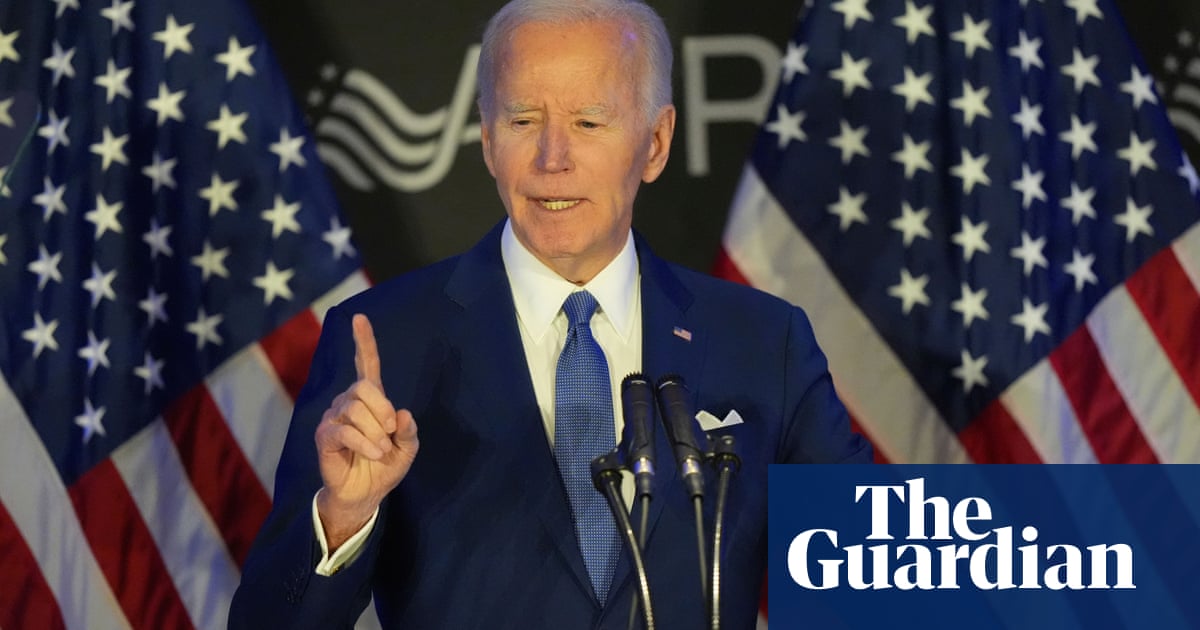Donald Trump has defended his tariffs by arguing that they are already raking in almost $2bn (£1.6bn) a day for the US.
Speaking after more than $5tn of losses on the US stock market since his “liberation day” announcement last week, he made the claim on Tuesday, adding: “America is going to be very rich again, very soon.”
Trump did not give any evidence for his $2bn claim, which is tough to substantiate and raises big questions about how his tariff plans are supposed to fit with his broader economic and fiscal policy.
As seismic as his tariff plans are, it is highly unlikely that $2bn a day is being raised, or ever could be.
First, there is a timing point. Trump’s 10% baseline tariff came into effect on 5 April, while additional rates for some countries – including a 104% charge on Chinese imports – came in from 00.01 EST on Wednesday. Some extra revenues are therefore likely.
However, the announcements exempt goods already loaded on to a vessel at ports and in their final transit to the US. With shipping from China taking at least two weeks by sea, any imports charged with the 104% tariff rate are likely to be some way off.
Second, there is the scale of the additional revenue. Figures from the US Treasury department show “customs and certain excise taxes” have, on average, totalled about $200m a day so far this month. For the entire month of February, $7.25bn was raised. About $75bn in customs duties and excise taxes have been raised in the roughly six months since the US financial year began on 1 October, significantly short of the $700bn annual figure Trump is alluding to.
To get to that tenfold increase overnight, one possibility is that Trump has used some hypothetical maths.
Last year the US imported about $3.2tn in goods. If a 104% tariff had been applied to all the $438.9bn imports from China, that would have raised about $456.5bn, or about $1.25bn a day.
Applying a 10% tariff to the remainder in an incredibly rough application would raise another $800m a day – surpassing the daily $2bn total even without taking into account the elevated tariffs on nearly 60 other trading partners and steel and car levies Trump has announced.
However, the chances are slim that such a static calculation would ever bring in such sums in reality. That’s because border taxes are not primarily designed as revenue raisers but as a way to penalise imports and promote domestic goods. Only the most desperate customer would pay twice the face value of a product. That demand destruction will therefore most likely lead to a sharp fall in imports, rather than a large rise in tax revenue.
after newsletter promotion
Tariffs are also likely to have a chilling effect on the US economy, with a severe impact on jobs amid the growing risk of a recession, which would have a damping effect on raising federal taxes elsewhere. Economists agree that tariffs would be ultimately paid by US consumers, as the buyers of imported goods, meaning Trump is touting one of the largest tax rises in recent history.
According to analysis by the Tax Foundation thinktank – before Trump raised the stakes with a 104% tax on Chinese imports – the tariff plans as they were when first announced on 2 April could raise $2.9tn in revenue over 10 years if made permanent, or about $300bn a year on average: still significantly short of Trump’s $2bn a day claim.
However, the economic damage they would inflict reduces that revenue to about $2.3tn. Trump has said the revenue could be used to help cut taxes for US businesses, but the foundation estimates that the changes could cost $4.5tn over the next decade, undermining his calculations.
There are, however, further problems: if the idea is to choke off imports from overseas to prioritise US manufacturing, then the aim is not to raise money. And if the tariffs are a bargaining chip to be trimmed back once deals are struck with trading partners, they will again not have the revenue-raising powers he proclaims.

.png) 6 days ago
11
6 days ago
11













































